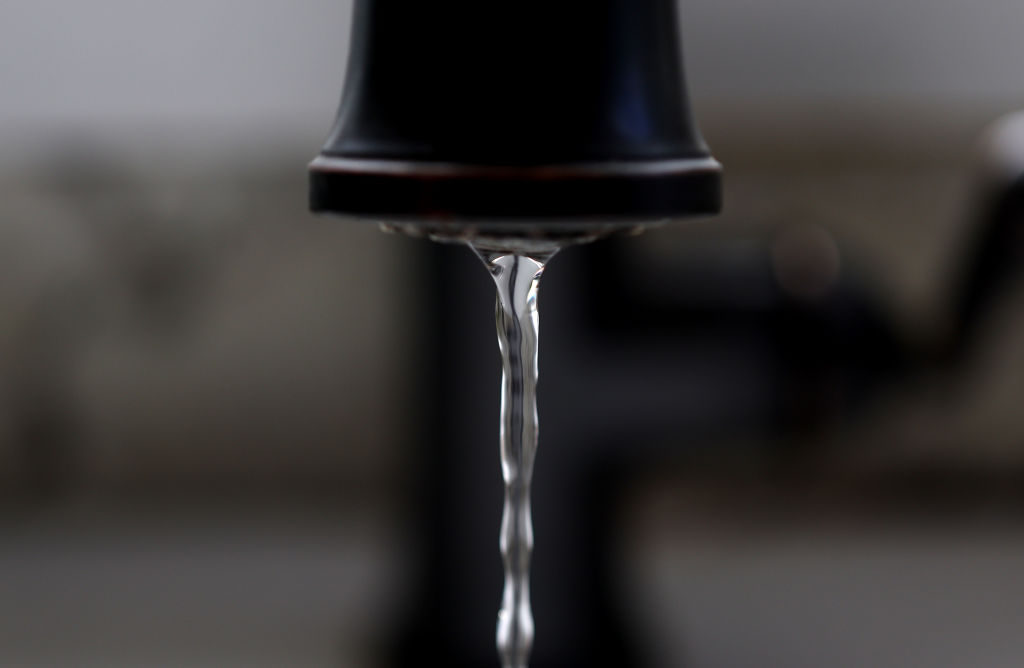(Photo Illustration by Justin Sullivan/Getty Images)
Pennsylvania’s school districts are failing to protect children from exposure to lead in school drinking water, an environmental advocacy group said as it called on lawmakers to require and pay for the installation of filtered water fountains.
In a report published Wednesday, PennEnvironment found that Pennsylvania’s 2018 rules requiring school districts to test for lead annually are poorly enforced, include loopholes to avoid testing, make it difficult for the public to find test results and do little to protect children.
“The strategy of testing and fixing doesn’t work. It’s clearly a failing strategy to protect kids,” PennEnvironment Executive Director David Masur told the Capital-Star on Wednesday, noting that 90% of school districts that havetested their schools’ drinking water reported the presence of lead.
“We know that when they test they will find lead,” Masur said. “We have to go right to remediating the problem and the cheapest best way to do this is to replace old drinking fountains with modern filtered water bottle filling stations and drinking fountains.”
A small number of school districts have taken action to eliminate lead from drinking water, such as Philadelphia, where lead was found in the water at 98% of schools that tested, according to a 2022 study. There, Philadelphia City Council unanimously passed legislation requiring the replacement of drinking fountains with lead-filtering hydration stations by the end of this year.
But elsewhere in the state, there has been little action to address lead. Masur said bipartisan legislation to spur school districts to update their drinking water sources to filter out lead has been introduced in both chambers of the state legislature, but it has not advanced beyond the education committees in each chamber.
GET THE MORNING HEADLINES DELIVERED TO YOUR INBOX
State House Education Committee Chairperson Peter Schweyer (D-Lehigh) said that ensuring that students have safe drinking water is among a broad and varied range of issues that school districts need to address.
“There are schools that are virtually unusable because it’s 120 degrees in the classrooms because there’s no air conditioning,” Schweyer said, adding that legislation focused on a single school facility issue would restrict what districts could use limited funding to remedy.
For its analysis, PennEnvironment requested documents using the Pennsylvania Right to Know law from nine of the state’s largest school districts. It found that all but one “at one time or another” had failed in some way to comply or used an exemption to skirt lead testing requirements in the state’s School Code.
Only Scranton School District performed testing as required and made the results accessible, but even Scranton reported it had the number of drinking fountains required by state law. The state’s building code requires one fountain for every 100 students.
Other districts including Altoona, Bethlehem, Hazleton and York did not perform annual testing while Norristown and West Chester school districts used an exemption in the law by holding a public meeting to “discuss lead issues in the school facilities” instead of testing, according to PennEnvironment’s report.
The report also says several of the school districts tested only one or two water sources in each school, which, while technically compliant, is not sufficient to ensure safe drinking water.
Masur said the concentration of lead contamination in drinking water is dependent on a number of factors such as chemistry, water use and lead in plumbing fixtures. As a result, water tested from a source may show no signs of lead one day and high levels of lead on another.
Most of the school districts did not make it easy for the public to access lead testing results, by failing to post them on district websites or burying them in school board meeting minutes, according to PennEnvironment. The report also says that test results are not consistently reported to the Pennsylvania Department of Education.
Senate Bill 986, introduced by state Sen. Devlin Robinson (R-Allegheny) and House Bill 2011 introduced by state Rep. Roni Green (D-Philadelphia) would require school districts to ensure that all drinking water sources in school buildings are equipped with filters designed to remove lead.
The bill would also require districts to have maintenance programs for water filters and require the Department of Education to establish a grant program to pay for filters and bottle filling stations or drinking fountains equipped with filters.
Masur said the legislation would establish a $30 million fund to provide the grants over three years.
Schweyer said that the Commonwealth Court lawsuit by six economically disadvantaged school districts and parents of their students showed that school facilities are a major source of inequity between the state’s wealthiest and poorest communities.
In the last two years that Democrats have held a majority in the state House, they fought for and won $175 million in new funding for environmental remediation and repair in school buildings. It was the first such funding to be included in a state budget for seven years, he said.
That money can be used to address lead in drinking water or lead paint in classrooms among a “gazillion things that need to be remedied in schools,” Schweyer said.
Masur said federal funding has also been available to school districts to ensure safe drinking water, but PennEnvironment’s report shows that school districts are not taking action.
“The sad reality is that most school districts aren’t taking those opportunities so that’s why we feel very strongly that we must make the requirement to make the changes because that will incentivize school districts to tap into this money,” he said, adding that PennEnvironment estimates the cost of installing a hydration station with a filter is about $2,500. “This is such a small drop in the bucket to comprehensively fix this problem.”
SUPPORT NEWS YOU TRUST.

